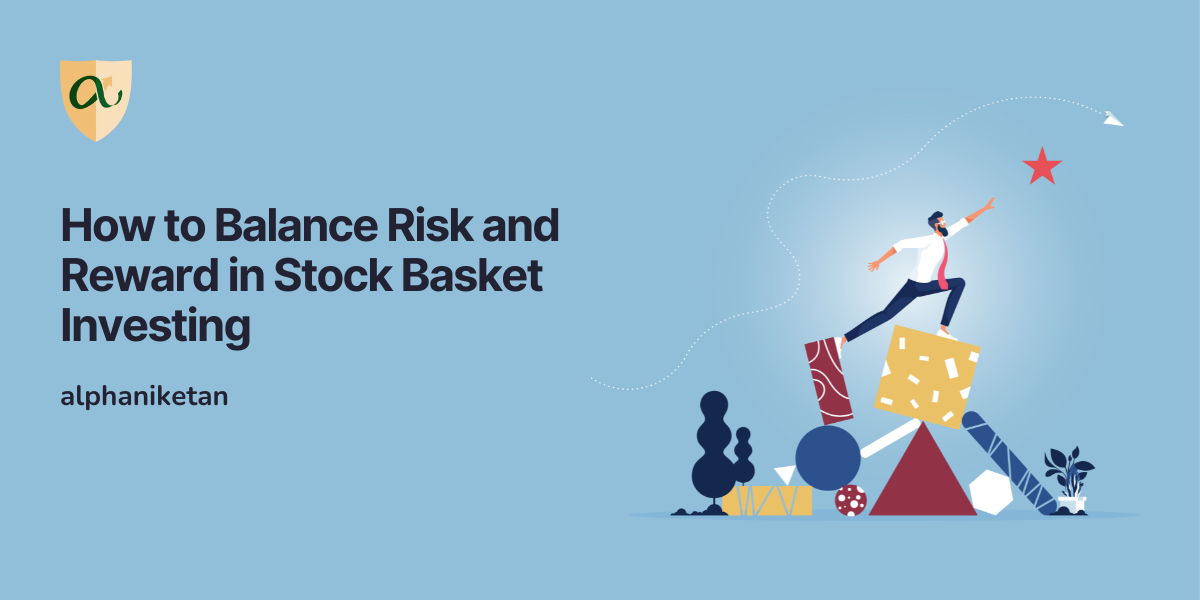Mastering the art of risk management in stock basket investing
Based on a specific theme, stock baskets are a unique way to invest in the stock markets. These themes can include curating a basket comprising stocks focusing on “green energy” or “large-cap Indian companies”. Investing in a stock basket enables investors to invest in sectors they believe will outperform in the forthcoming years.
Successful traders say, “Plan the trade and trade the plan”. A trade plan must have a strategy for both risks and returns. However, as investors, we must understand the risks we take and manage them responsibly. That means balancing risk among investments, so returns have the potential to be maximised while minimising exposure to losses.
Talking of risks, you must differentiate between risk appetite and risk tolerance. Risk appetite represents your inclination to take risks, while risk tolerance signifies your capacity to take them. You might be an enthusiastic risk-taker inclined towards high-risk ventures. Nevertheless, you must examine your present situation and long-term obligations before making investment decisions.
You can choose to invest in stock baskets by creating your baskets as per your understanding of the market, or you can invest in expert-curated stock baskets. While stock basket managers closely monitor their baskets and implement risk management, you must closely check their strategy and ensure it aligns with your goals.
A goal-based investment approach is the most effective for novice and experienced investors. Categorise your objectives into short-term, medium-term, and long-term goals to determine your asset allocation. Invest in appropriate stock baskets that align with your short-term goals or provide capital protection for them.
Allocate roughly 10% of your portfolio to stock baskets with a suitable risk profile for medium-term investments. Long-term assets can have a slightly higher risk exposure, as returns tend to increase over time while risk is averaged.
Before investing in a stock basket, thoroughly review its composition and holdings. Assess the underlying assets, sectors, and industries represented in the basket. Consider the historical performance and volatility of these components. By understanding the composition, you can make informed decisions about the risk level associated with a particular stock basket and determine if it aligns with your risk-reward preferences.
You must ensure that the stock basket manager or algorithms use risk management tools like stop-loss orders and limit orders to mitigate downside risk and protect your investments.
Risk management in stock baskets is a significant factor to have as part of your investment strategy. Diversifying your portfolio means investing across various asset classes like stocks, bonds, and real estate. A stock basket can help you achieve this diversification by investing in multiple themes that have the potential to grow. Managing individual stocks and bonds can be tedious and requires much time and effort. Instead, you could invest in 4 to 5 well-researched stock baskets that resonate with your financial goals.
Once you’ve invested in stock baskets, monitoring your portfolio’s performance is essential. Markets and economic conditions can change, affecting your investments’ risk and reward profiles. Rebalancing your portfolio involves adjusting your allocations to maintain your desired risk level. This process helps you stay on track with your investment goals and ensures that your portfolio remains balanced.
If you find balancing risk and reward in stock basket investments challenging, consider seeking advice from a financial advisor. An experienced advisor can help you assess your risk tolerance, design a diversified portfolio of stock baskets, and provide guidance on when to rebalance. Their expertise can be invaluable in achieving your investment objectives while managing risk effectively.
In conclusion, invest in opportunities aligned with your values and risk tolerance. Differentiate between good and bad risk, considering your time horizon. Seek expert advice and use risk questionnaires to guide your investment journey. Lastly, have someone review your portfolio to ensure you’re taking the right level of risk, as this can significantly impact your long-term wealth.
Thank you for reading this post, don't forget to subscribe!




